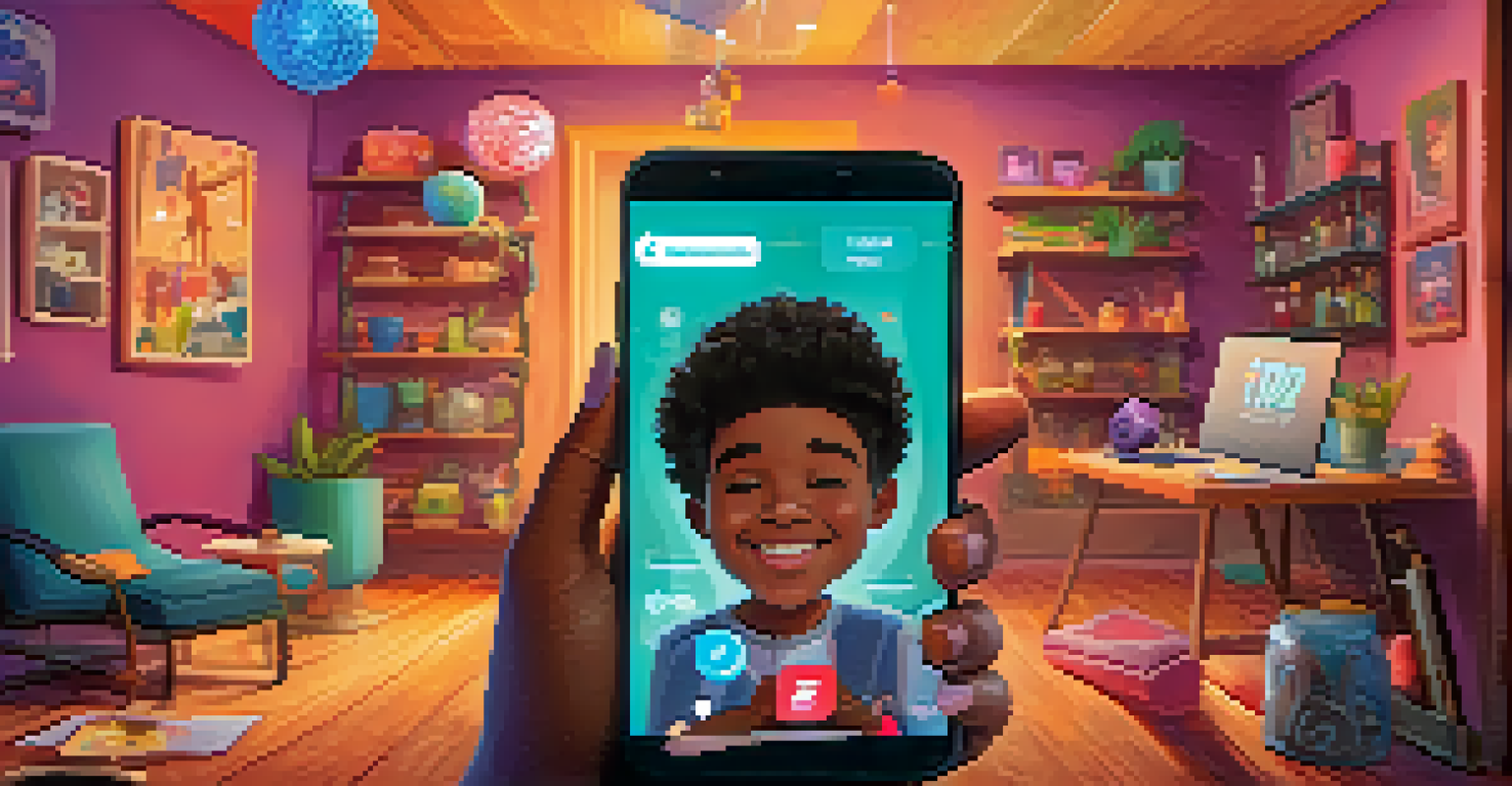The Role of Technology in Youth Mental Health Support

Understanding Youth Mental Health Challenges Today
Youth mental health has become a pressing issue in recent years, with statistics showing a rise in anxiety, depression, and other mental health disorders among young people. Factors like social media influence, academic pressure, and global events contribute to these challenges. Understanding these issues is the first step toward providing effective support systems.
Mental health is not a destination, but a process. It's about how you drive, not where you're going.
As young people navigate their formative years, they often face unique pressures that can lead to feelings of isolation and stress. The pandemic, for example, significantly impacted their mental well-being, with many experiencing increased feelings of loneliness. Addressing these challenges requires a comprehensive approach that includes both traditional and modern solutions.
Recognizing these challenges allows us to appreciate the role technology can play in helping youth manage their mental health. By leveraging innovative tools, we can create supportive environments that cater to their needs and preferences, ultimately fostering resilience and well-being.
The Rise of Digital Mental Health Tools
In recent years, we’ve seen a surge in digital mental health tools, ranging from apps that promote mindfulness to online therapy platforms. These technologies provide immediate access to resources that can help young people cope with their mental health struggles. Accessibility is key, especially for those who may feel uncomfortable seeking help in traditional settings.

For example, apps like Headspace and Calm offer guided meditations and relaxation techniques, making it easier for youth to incorporate mental health practices into their daily lives. Additionally, platforms such as BetterHelp connect users with licensed therapists through convenient online sessions, breaking down barriers to access. This flexibility is particularly appealing to younger generations accustomed to digital communication.
Youth Mental Health Challenges Rise
Young people face increasing mental health issues, driven by factors like social media, academic pressure, and the pandemic.
As technology continues to evolve, the potential for digital solutions to enhance mental health support grows. By integrating these tools into their lives, youth can take proactive steps toward managing their mental health, fostering a sense of empowerment and agency.
Social Media: A Double-Edged Sword
Social media can be both a boon and a bane for youth mental health. On one hand, it provides a platform for connection, allowing young people to share their experiences and find support from peers. Communities formed around shared struggles can create a sense of belonging, which is crucial for mental well-being.
The greatest weapon against stress is our ability to choose one thought over another.
On the flip side, excessive use of social media can lead to negative outcomes, such as comparison, cyberbullying, and distorted self-image. The curated lives presented online often create unrealistic expectations, contributing to feelings of inadequacy among youth. It’s essential to strike a balance between leveraging social media for support and recognizing its potential pitfalls.
Encouraging healthy social media habits can help mitigate these risks. Educating youth about the importance of taking breaks, curating their feeds, and engaging in positive online interactions can lead to a healthier relationship with technology, ultimately benefiting their mental health.
Teletherapy: Bridging the Gap in Mental Health Services
Teletherapy has emerged as a crucial resource for youth seeking mental health support, especially during times of crisis. This approach allows young people to speak with therapists from the comfort of their homes, removing the stigma often associated with in-person visits. It also increases access for those in remote areas or with mobility issues.
The convenience of teletherapy means that young people can fit sessions into their busy schedules, making it easier to prioritize their mental health. Moreover, the ability to connect with a therapist who specializes in youth issues can lead to more effective treatment. This tailored approach enhances the therapeutic experience, paving the way for better outcomes.
Digital Tools Enhance Support
The rise of digital mental health tools, such as apps and teletherapy, offers accessible resources for youth to manage their mental well-being.
As acceptance of teletherapy grows, it may become a staple in mental health care for youth. By continuing to innovate and adapt these services, we can ensure that young people receive the support they need, when they need it.
The Role of Online Support Communities
Online support communities can play a vital role in youth mental health by providing safe spaces for sharing experiences and advice. These platforms allow individuals to connect with others facing similar challenges, fostering a sense of understanding and solidarity. For many, this sense of community can be a lifeline during tough times.
Sites and forums dedicated to mental health often feature moderated discussions, ensuring that conversations remain supportive and constructive. Peer support can be incredibly empowering, and having a network of individuals who truly understand can make all the difference in a young person’s journey. It’s about finding that shared voice in a sea of confusion.
While these communities offer valuable support, it's important to navigate them wisely. Encouraging youth to seek out reputable platforms and reminding them that professional help is still vital creates a balanced approach to mental health care.
Gamification: Making Mental Health Engaging
Gamification, or the incorporation of game-like elements into non-game contexts, has emerged as an innovative approach to mental health support. Apps that provide mental health resources in a game format can engage youth in ways that traditional methods may not. This interactive approach can make learning about mental well-being feel more enjoyable and less daunting.
For instance, some mental health apps include challenges, rewards, and progress tracking, encouraging users to explore coping strategies and mindfulness techniques. By turning mental health practices into a game, youth are more likely to participate actively and consistently. This can lead to lasting changes in their approach to mental well-being.
Social Media's Mixed Impact
While social media can foster connection and community, it also poses risks like comparison and cyberbullying, necessitating balanced use.
While gamification is not a substitute for professional therapy, it can complement traditional methods by making mental health care more accessible and engaging. The key is to find a balance that works for each individual, promoting both fun and meaningful progress.
The Importance of Digital Literacy in Mental Health
As technology becomes increasingly integrated into mental health support, digital literacy is crucial for youth. Understanding how to navigate online resources safely and effectively empowers young people to take charge of their mental health journey. Educating them on how to find credible information and access support can make a significant difference.
Digital literacy also involves recognizing the signs of misinformation and understanding the importance of privacy and confidentiality online. By equipping youth with these skills, we can help them make informed decisions about their mental health care and the resources they choose to engage with. This knowledge fosters a sense of autonomy that is vital for their development.

Ultimately, promoting digital literacy goes hand in hand with improving youth mental health support. By preparing young people to navigate the digital landscape, we can ensure they access the resources they need while avoiding potential pitfalls.